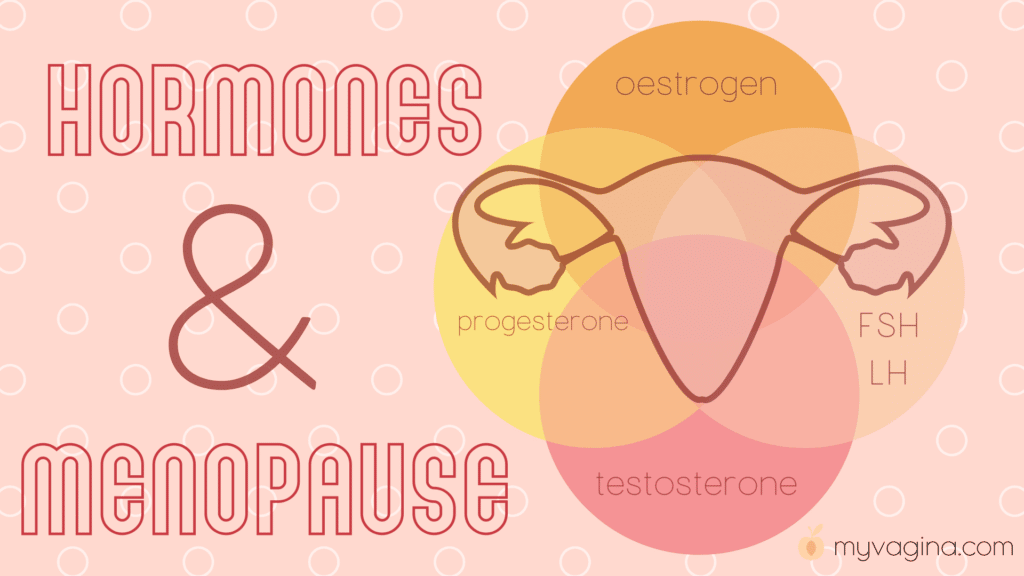There are just a handful of hormones involved in the female menstrual cycle:
- Oestrogen
- Progesterone
- Testosterone
- Follicle-stimulating hormone (FSH)
- Luteinising hormone (LH)
FSH and LH in perimenopause
Oestrogen normally inhibits follicle-stimulating hormone (FSH), but as oestrogen decreases, elevated blood levels of FSH become clear on a blood test – this is one of the indicator tests for menopause.
FSH and luteinising hormone (LH) are released about every 60-90 minutes in small bursts, with the burst of LH understood to coincide with hot flashes.
LH also stimulates the ovaries to produce an androgen that is converted into a form of oestrogen (oestrone), which is the most dominant type of oestrogen in postmenopausal women. The majority of oestrone production in postmenopausal women, however, is the job of the adrenal glands.
The adrenal glands and oestrogen production
The adrenal glands produce the most of the androgen that is converted to oestrone, with fat cells doing the conversion via process known as aromatisation. The more oestrone you have in menopause will correlate with greater bone density and fewer menopausal symptoms, and this varies from person to person.
Oestrone is about 12 times weaker than your usual oestrogen from the ovaries, oestradiol. The oestrogen effect in menopause is heavily reduced. Without as much oestrogen, androgens behave differently too, but only drop by about 15 per cent.
Androgens (testosterone) in perimenopause and menopause
Overall, androgens become dominant. The ‘androgen body type’ is that of a man’s, with skinny legs and a bigger midsection – the classic older person’s body. The loss of androgens is also believed to contribute to menopausal symptoms. This is understood to be because half of our testosterone is produced in the ovaries, with just 10 per cent from the adrenals, and the rest converted in our fat cells.
The testosterone levels of a woman in her forties are half that of a woman in her twenties. Low levels of testosterone are thought to contribute to low mood, less stamina, lowered libido, and other symptoms.
Some women, on the other hand, will see male-pattern hair loss or facial hair growth, caused by the effect of the androgen DHEA on hair follicles, indicating more androgen effect. (Rather than net greater androgens.)
Progesterone in perimenopause
Progesterone is produced unpredictably in perimenopause due to sometimes ovulating and sometimes not. Progesterone is produced by ovulation by the little sac, the corpus luteum, that the egg pops out of, so the less ovulation, the less progesterone is being produced. Progesterone declining can cause mood changes and heavier periods.
All these changes together cause the physical and chemical changes that characterise menopause, bringing with them hot flushes, mood changes, and menstrual cycle changes.
If you’re getting unpleasant perimenopausal symptoms or want to make sure you don’t in future, book with one of our specialist practitioners.








